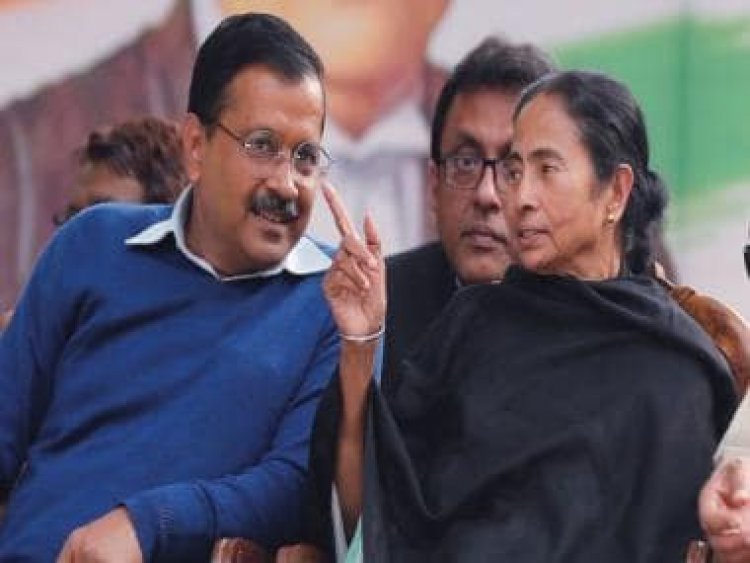Explained: How did Arvind Kejriwal’s AAP win ‘national party’ status and Trinamool, NCP, CPI lose it?
Explained: How did Arvind Kejriwal’s AAP win ‘national party’ status and Trinamool, NCP, CPI lose it?

In the ongoing tussle called politics, there’s always something to gain and a lot to lose. In India, the Arvind Kejriwal-led Aam Aadmi Party (AAP) has reasons to rejoice. Meanwhile, Mamata Banerjee’s Trinamool Congress and Sharad Pawar’s Nationalist Congress Patry (NCP) and the Communist Party of India (CPI) have some retrospection to do. The Election Commission of India has reviewed political parties and AAP has been given the status of a national party. Trinamool, NCP and CPI have lost the coveted tag.
What is a national party?
A national party has a presence across the nation as opposed to a state or regional party whose presence is restricted to a state or a region.
National parties are bigger and have an influence across the country like Congress and the Bharatiya Janata Party (BJP). But that does not necessarily mean they enjoy more political clout as we have seen with Congress in recent years.
Often, regional parties remain powerful, dictate terms and make it difficult for even the bigger national parties to make headway in the state. For example, the DMK and the AIADMK, which dominate Tamil Nadu politics. Other regional parties like the Biju Janata Dal in Odisha and the Rashtriya Janata Dal in Bihar often influence national affairs.

How does the EC define a national party?
According to the EC, political parties in India are listed as “national party”, “state party” or “registered (unrecognised) party”. The conditions for being listed as a national or state party are specified under the Election Symbols (Reservation and Allotment) Order 1968.
To be a national party, the collective has to fulfil any of the three following conditions: i) it should be recognised as a state party in at least four states, ii)
the party should win two per cent of seats in the Lok Sabha from at least three different states, or iii) it should poll six per cent of the total votes in the last Lok Sabha or Assembly election and should win at least four Lok Sabha seats
What are the benefits of being a national party?
When recognised as a national party, the outfit is entitled to a reserved symbol for its candidates contesting across the country. This is important for a political party as a large number of voters who cannot read depend on symbols to identify the party they are voting for. Having a pan-India symbol helps parties reach out to prospective voters.
Candidates from a national party require only one proposer to file their nominations. Such a party also benefits from having a maximum of 40 “star campaigners” during a general election, which will be held in India next year. It also gets dedicated broadcast slots on public broadcasters Doordarshan and All India Radio during the general elections.
The “national party” tag also comes with a government bungalow in New Delhi for its national president and office space at a subsidised rate in the national capital.

How did AAP get the status?
The AAP which started as a party from Delhi is expanding its footprint. It is in power in Delhi and won Punjab in March 2022. It got a three-fourths majority in the Punjab Assembly polls, bagging 42 per cent of the votes cast. In last year’s Goa Assembly polls, AAP received 6.77 per cent of the vote.
Towards the end of 2022, when AAP contested the Gujarat and Himachal elections, it was already recognised as a state party in three states. It needed to make a mark in one state to get the “national party” tag – six per cent votes in either of the states to be recognised in a fourth state.
The party bagged one per cent of votes in Himachal, but in Gujarat, it got almost 13 per cent of votes – more than double of what was required. With that AAP was recognised as a state party in Gujarat. With a presence in four states now, it won the “national party” tag.
How did Trinamool, NCP, CPI lose the tag?
Earlier India had seven national parties – the Congress, BJP, Trinamool, Bahujan Samaj Party, NCP, CPI and CPI (Marxist). Now with the NCP, Trinamool and CPI losing their status and AAP being added to the list, the country has five national parties.

In 2016, Trinamool became a national party but its poor performance in Goa and losing the “state party” tag in Manipur and Arunachal Pradesh meant it did not fulfil the criteria to be recognised as a national party. It’s a state party in West Bengal and Tripura.
The NCP formed by Sharad Pawar in 1999 became a national party a year later in 2000 after a series of wins in several elections. It enjoyed a “state party” status in Arunachal Pradesh, Maharashtra, Meghalaya, Manipur and Nagaland. But an EC review found that the party does not meet the conditions in Meghalaya, Manipur and Arunachal. It is recognised as a state party in two states, Nagaland and Maharashtra, which is not enough to be tagged a national party.
The CPI was recognised as a national party in 1989. It formerly had a “state party” label in Kerala, Manipur, Odisha and West Bengal, but has lost this status in the latter two states. Hence, it is no longer a national party.

How have other parties fared?
RLD in Uttar Pradesh, BRS in Andhra Pradesh, PDA in Manipur, PMK in Puducherry, RSP in West Bengal and MPC in Mizoram have lost their “state party status.
The EC granted a “recognised state political party” tag to the Lok Janshakti Party (Ram Vilas) in Nagaland, Voice of the People Party in Meghalaya, and the Tipra Motha in Tripura.
With inputs from agencies
What's Your Reaction?

























































